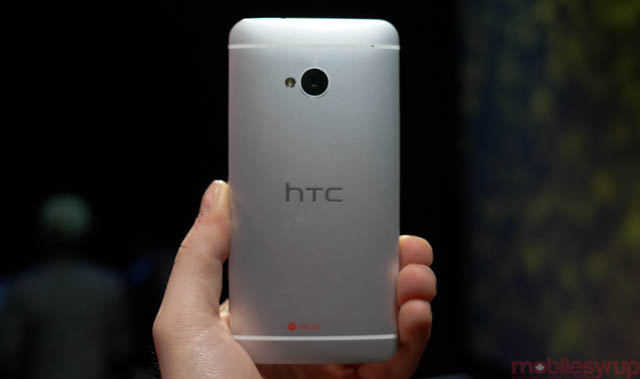 According to HTC representatives, the One will be the company’s only flagship release this year, in contrast to previous years when the company brought out multiple high-end devices. The idea is simple: focus on marketing a single product to millions of potential customers across hundreds of carriers. The less HTC dilutes the top of the Android pyramid, the more room it has for its own flagship. Make sense?
According to HTC representatives, the One will be the company’s only flagship release this year, in contrast to previous years when the company brought out multiple high-end devices. The idea is simple: focus on marketing a single product to millions of potential customers across hundreds of carriers. The less HTC dilutes the top of the Android pyramid, the more room it has for its own flagship. Make sense?
But HTC has another issue to contend with: in introducing Ultrapixel, which is a marketing term for a camera sensor with a lower pixel count but larger actual pixels, it sets a precedent for its own future products. That’s why the actual number of megapixels is not mentioned anywhere on HTC’s marketing literature. How would it look if, in 2012, the company released the One X with a 4MP “Ultrapixel” camera and the One S with a regular 8MP BSI sensor. The Taiwanese OEM is going to have trouble competing against the Galaxy S IV’s 13MP shooter, even if it does end up taking better shots; consumers are convinced that more megapixels leads to improved quality.
Consumer education aside, releasing one device in the calendar year frees up HTC to do a lot of interesting things: it can drill down on specific features, rather than attempt to woo customers to various product tiers based on price and performance. The One is the device of the moment; there is nothing else to look at, other than perhaps the Windows Phone 8X which runs a separate operating system. HTC has focus on the exemplary build quality, gorgeous 1080p screen, unmatched hardware specs (at least for a little while) and overall improved Sense UI. It can trumpet Zoe Share and offer examples of why the One beats the Galaxy S IV.
HTC is not in the financial position to perform the twice-yearly miracle Samsung seems to have manufactured with the Galaxy S and Galaxy Note series; it needs to win over fans of small and big phones with one product, which is likely why it stayed with the 4.7-inch screen size instead of entering phablet territory with a 5-inch monster. It’s yet to be seen whether other companies like Huawei and LG can repeat Samsung’s success in that space.
Ultrapixel and BlinkFeed, two marquee features of the One, will eventually trickle down to cheaper devices. HTC has found success in entry-level smartphones like the Desire C, and will benefit from using consistent branding on all its future devices. Whether we’ll see these rumoured entry- and mid-range devices in 2013 is anyone’s guess, but we predict HTC will get itchy before the beginning of Q4 and out a couple of cheaper handsets.
HTC is also promising to bring Sense 5 to an array of 2012 devices, including the One X and One S. Obviously it won’t be able to use the Ultrapixel branding on a legacy device, but it could go the way of Nokia’s PureView and begin using the name as a more general moniker for the company’s achievements in optics. Ultrapixel’s many achievements are predicated on having Qualcomm’s quad-core Snapdragon silicon inside the device, so it’s unlikely we’ll see things like the ability to shoot both high-definition video and snap top-quality photos in mid-range fare.
Source: Omio
Via: HTC Source
MobileSyrup may earn a commission from purchases made via our links, which helps fund the journalism we provide free on our website. These links do not influence our editorial content. Support us here.


